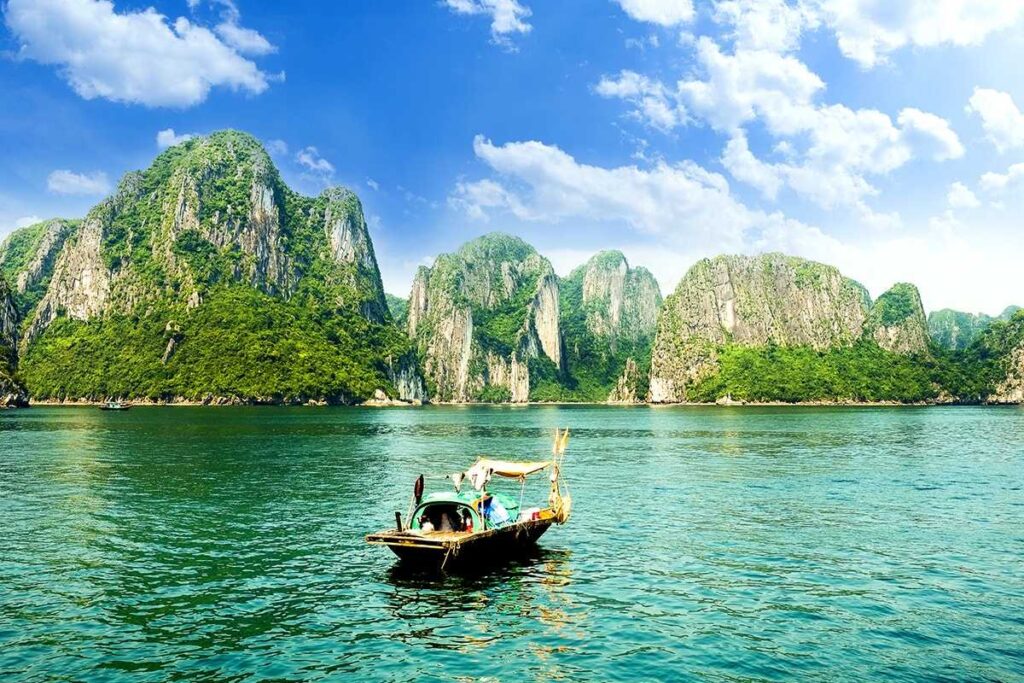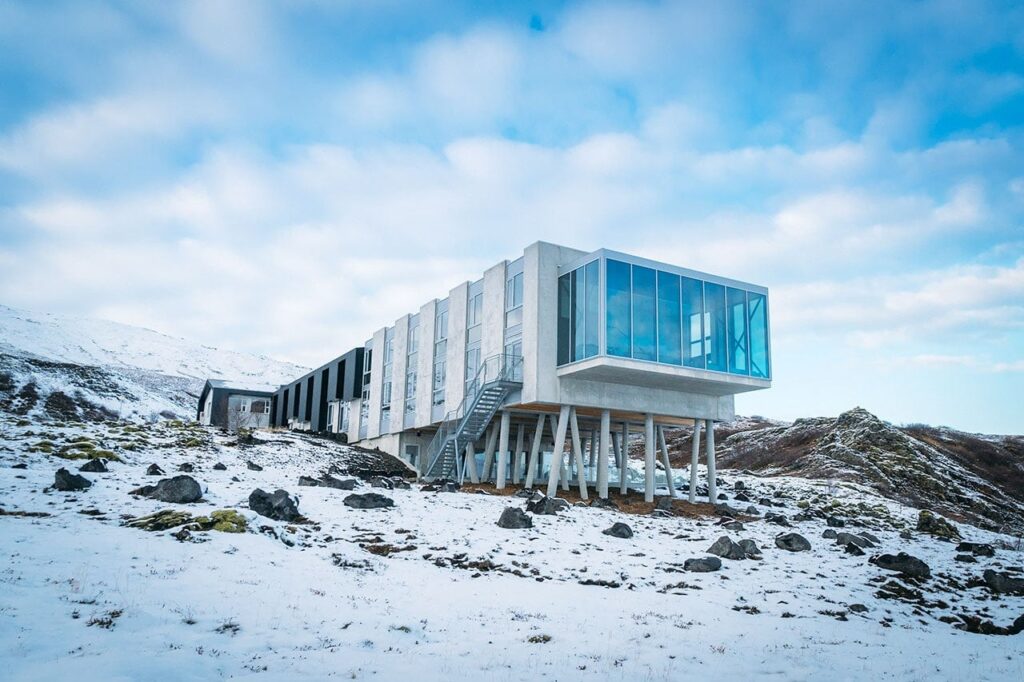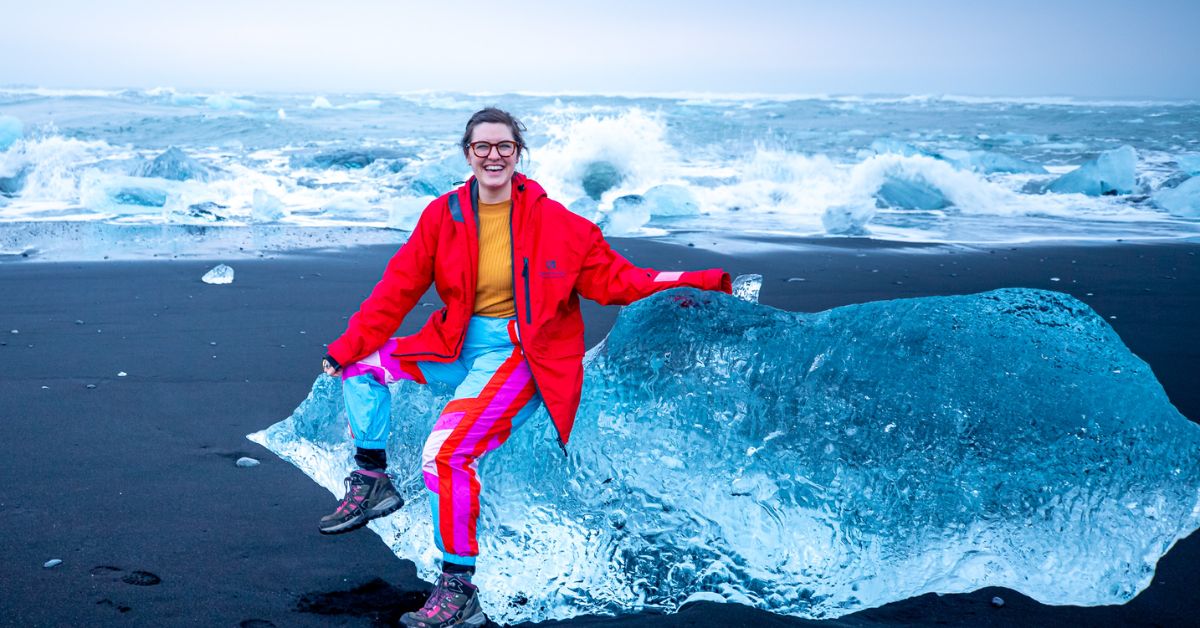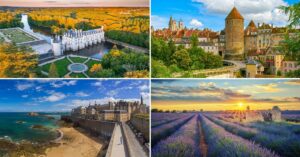I've spent countless hours exploring Iceland's dramatic landscapes, and I'm excited to share everything I've learned about this incredible destination. My Iceland travel guide will help adventurous travelers, nature lovers, and anyone drawn to unique destinations plan their perfect Nordic adventure.
Iceland delivers experiences you won't find anywhere else on Earth. From geysers that shoot boiling water into the sky to the dancing Northern Lights, this island nation offers natural wonders that feel almost otherworldly. I've watched the sun set behind massive glaciers and soaked in geothermal hot springs under starry skies.
I'll walk you through the essential planning details that can make or break your trip, including the best times to visit and what to pack for Iceland's unpredictable weather. You'll also discover my favorite natural wonders and geological marvels, from the famous Blue Lagoon to hidden waterfalls that most tourists never see. Finally, I'll share outdoor activities that let you experience Iceland's raw beauty up close, from glacier hiking to whale watching along the dramatic coastline.
Essential Planning Information for Your Iceland Adventure
Planning an Iceland adventure requires preparation for its dramatic landscapes and ever-changing weather. From packing waterproof gear and renting a 4×4 to understanding local customs and daylight hours, having the right information ensures a safe, enjoyable, and unforgettable journey through this breathtaking Nordic destination.
1. Best Times to Visit for Different Experiences
I always tell people that timing your Iceland trip makes all the difference in what you'll experience. Summer months from June to August offer the warmest weather and nearly 24 hours of daylight, perfect for hiking and exploring the highlands. I love visiting during this peak season because you can access remote locations like Landmannalaugar and drive the complete Ring Road without weather concerns.
Winter visits from November to March bring a completely different magic. I've found December through February ideal for northern lights hunting, with long dark nights providing perfect viewing conditions. The trade-off? You'll deal with limited daylight hours (around 4-5 hours) and challenging road conditions.
My personal sweet spot is the shoulder seasons – April to May and September to October. You'll dodge the crowds, enjoy moderate weather, and still catch some northern lights action in the fall. Spring brings lupine flowers and fewer tourists, while autumn offers stunning colors and crisp air.
For budget-conscious travelers, I recommend avoiding July and August when prices peak. Winter can be surprisingly affordable for accommodations, though you'll spend more on tours since self-driving becomes trickier.
2. Visa Requirements and Entry Documentation
I'm happy to report that Iceland makes entry relatively straightforward for most travelers. As part of the Schengen Agreement, Iceland allows visa-free visits for up to 90 days for citizens from the United States, Canada, Australia, New Zealand, and most European countries.
Your passport needs at least six months of validity remaining from your planned departure date. I always double-check this well before traveling since renewing passports can take weeks.
European Union citizens enjoy even simpler entry with just a valid national ID card. For everyone else, that passport is essential.
If you're planning an extended stay or coming from countries not on the visa-free list, you'll need to apply for a Schengen visa through an Icelandic embassy or consulate. I recommend starting this process at least three months before your trip.
One thing I love about Iceland's immigration process – it's typically quick and hassle-free at Keflavík Airport. Officers rarely ask many questions for tourist visits, but I always keep my return ticket and accommodation confirmation handy just in case.
3. Budget Planning and Cost Expectations
I won't sugarcoat it – Iceland ranks among Europe's most expensive destinations. My daily budget recommendations vary dramatically based on your travel style:
Budget travelers can manage around $80-120 per day by:
- Staying in hostels or camping
- Cooking your own meals
- Using public transportation
- Focusing on free natural attractions
Mid-range travelers should plan for $150-250 daily, covering:
- Guesthouses or mid-tier hotels
- Mix of restaurant meals and self-catering
- Rental car expenses
- Paid attractions and tours
Luxury travelers easily spend $300+ daily on high-end hotels, fine dining, and premium experiences.
I've learned some money-saving tricks over multiple visits. Grocery shopping at Bonus (the pink pig stores) cuts food costs dramatically. A simple meal at a restaurant runs $25-40, while cooking pasta with groceries costs under $5.
Fuel prices shock many visitors – expect around $6-7 per gallon. I always factor this into rental car budgets, especially for Ring Road trips covering 800+ miles.
My biggest splurges? The Blue Lagoon ($50-80 entry) and glacier tours ($100-200). These experiences justify their cost, but budget accordingly.
4. Packing Essentials for Iceland's Climate
Iceland's unpredictable weather demands strategic packing. I've learned through soggy experience that the saying “there's no bad weather, only bad clothing” applies perfectly here.
Essential layers I never travel without:
- Waterproof jacket and pants (absolute must-haves)
- Warm fleece or wool mid-layer
- Moisture-wicking base layers
- Sturdy waterproof hiking boots
- Warm hat and waterproof gloves
The layering system works brilliantly because Iceland's weather changes constantly. I might start a day in sunshine and end it in driving rain and wind.
Year-round necessities:
- Swimsuit for hot springs and geothermal pools
- Sunglasses and sunscreen (snow and water reflection intensify UV)
- Headlamp or flashlight
- Power bank for phone cameras in cold weather
- Universal power adapter (Type F plugs)
Winter additions:
- Insulated jacket
- Thermal underwear
- Ice grips for shoes (microspikes)
- Scarf and warm socks
I pack half my suitcase with outdoor gear and have never regretted it. Quality rain gear transforms miserable weather into manageable adventures. Icelandic weather doesn't respect your schedule, so being prepared means you'll enjoy every moment of your Iceland travel guide experience, regardless of conditions.
Transportation Options to Navigate Iceland Efficiently

Getting around Iceland efficiently depends on your travel style and itinerary. Renting a car or campervan offers the most flexibility for exploring scenic routes like the Ring Road. Public buses connect major towns, while guided tours simplify travel to remote attractions. Domestic flights save time on longer routes, and 4×4 vehicles are essential for highland adventures.
1. Rental Car Benefits and Driving Tips
I always recommend renting a car for exploring Iceland because it gives me complete freedom to stop whenever I want and discover hidden gems off the beaten path. Having my own vehicle means I can chase waterfalls, pull over for incredible photo opportunities, and explore remote areas that tour buses simply can't reach.
When I'm driving in Iceland, I make sure to book a 4WD vehicle, especially if I'm traveling during winter or planning to venture into the highlands. The weather here changes quickly, and having reliable traction has saved me multiple times. I've learned to check road conditions on road.is before heading out each day – this website has been my lifesaver for avoiding closed roads and dangerous conditions.
My biggest driving tip? Take your time and respect the weather. I've seen too many travelers rushing between destinations and missing out on spontaneous discoveries. When I encounter sheep on the road (and I will), I slow down and wait patiently. These woolly locals have right of way, and they're not in any hurry.
I always pack extra food, water, and warm clothes in my rental car. Cell service can be spotty in remote areas, so I download offline maps before leaving populated areas. The Ring Road is well-maintained, but F-roads require serious preparation and a proper 4WD vehicle.
2. Guided Tour Packages vs Independent Travel
I've tried both approaches during my visits to Iceland, and each has distinct advantages depending on what I'm looking for. Guided tours take the stress out of planning and provide expert knowledge I wouldn't get on my own. When I joined a Northern Lights tour, my guide knew exactly where to go based on weather patterns and aurora forecasts something I couldn't have figured out myself.
The social aspect of group tours surprised me. I've met fellow travelers from around the world and shared incredible experiences with them. For activities like glacier hiking or ice cave exploration, I actually prefer guided tours because the safety equipment and expertise are included. My guide pointed out geological formations and shared stories about Icelandic culture that made the experience much richer.
However, independent travel gives me the flexibility I crave. I can spend three hours photographing a single waterfall if I want, or change my entire itinerary based on weather conditions. I've discovered my favorite spots in Iceland by simply taking random detours that caught my eye.
The cost difference varies depending on what I include. While tours seem expensive upfront, they often include transportation, equipment, and expertise. When I travel independently, I pay for car rental, gas, accommodation, and meals separately, but I have complete control over my budget and choices.
3. Domestic Flights for Remote Destinations
Flying within Iceland has opened up regions I couldn't easily reach by road, especially during my winter visits. I've taken domestic flights to reach the Westfjords when driving conditions were treacherous, and the aerial views alone made the flight worthwhile. Seeing Iceland's dramatic landscape from above gave me a completely different perspective on this incredible country.
The domestic flight network connects Reykjavík to several regional airports including Akureyri, Egilsstaðir, and Ísafjörður. I find these flights particularly valuable when I'm short on time or visiting during winter when some roads become impassable. The flights are relatively short – usually under an hour – but they can save me an entire day of driving.
I book domestic flights through Air Iceland Connect, and I've learned to be flexible with my travel dates since weather can cause delays or cancellations. The planes are smaller than what I'm used to on international routes, but the pilots are experienced with Iceland's challenging weather conditions.
For remote destinations like the Westman Islands, flying is practically essential unless I want to take the ferry. When I flew to Vestmannaeyjar, I gained precious time to explore the islands instead of spending hours on ground transportation. The bird's-eye view of the volcanic landscapes during takeoff and landing has become one of my favorite parts of these domestic flights.
Must-See Natural Wonders and Geological Marvels
Iceland is a land of breathtaking natural wonders shaped by fire and ice. From the mighty Gullfoss waterfall and Geysir geothermal area to the black sands of Reynisfjara and the glacial lagoons of Jökulsárlón, every landscape feels otherworldly. Don’t miss the Northern Lights, volcanic craters, and hot springs that make Iceland a true geological paradise.
1. Golden Circle Route Highlights
I've traveled Iceland's Golden Circle more times than I can count, and it never fails to take my breath away. This classic route combines three of Iceland's most spectacular natural wonders within a manageable day trip from Reykjavik.
My first stop is always Þingvellir National Park, where I can literally walk between two continental plates. The dramatic rift valley showcases where the North American and Eurasian tectonic plates are slowly drifting apart. I love exploring the crystal-clear Silfra fissure, where the water is so pure you can drink it straight from the source.
Geysir geothermal area comes next, and while the original Geysir rarely erupts anymore, its neighbor Strokkur puts on a show every 5-10 minutes. I always position myself upwind to avoid the sulfurous spray when it shoots water 20 meters into the air.
Gullfoss waterfall is my grand finale – this two-tiered cascade thunders into a narrow canyon with incredible force. I recommend viewing it from multiple angles, especially from the upper path where you can feel the mist on your face. The rainbow that often appears in the spray makes every photo look like a postcard.
2. Stunning Waterfalls Worth the Journey
Iceland's waterfalls have become my obsession, and each one tells a unique geological story. Skógafoss stands 60 meters tall and 25 meters wide, creating a wall of water that's absolutely mesmerizing. I always climb the 527 steps to the viewing platform above the panoramic view of the coastline is worth every breathless moment.
Seljalandsfoss offers something completely different. I can actually walk behind this 60-meter curtain of water, though I learned the hard way to bring waterproof gear. The cave-like space behind the falls provides an otherworldly perspective that few waterfalls in the world can match.
Goðafoss, the “Waterfall of the Gods,” holds special significance in Icelandic history. Legend says this is where the lawspeaker threw his pagan idols when Iceland converted to Christianity. The horseshoe-shaped cascade spans 30 meters and drops 12 meters into a dramatic gorge.
My hidden gem recommendation is Haifoss, Iceland's fourth-highest waterfall at 122 meters. The drive to reach it requires a 4WD vehicle, but the remote location means I often have this spectacular sight entirely to myself.
3. Glacier Exploration Opportunities
I've spent countless hours exploring Iceland's glaciers, and they represent some of the most accessible glacier experiences in the world. Vatnajökull, Europe's largest glacier by volume, covers about 8% of Iceland's landmass and offers multiple exploration options.
My favorite glacier adventure is ice cave exploration in winter months. These natural formations within Vatnajökull create ethereal blue chambers that feel like entering another planet. I always book with certified guides because glacier conditions change rapidly, and safety knowledge is essential.
Sólheimajökull glacier tongue provides excellent glacier hiking opportunities for beginners. I've guided many first-time visitors here because the easy access from the Ring Road makes it perfect for those wanting to experience walking on ice without technical mountaineering skills.
For the more adventurous, I recommend glacier climbing on Svínafellsjökull. This glacier has served as a filming location for numerous movies, including Game of Thrones and Interstellar. The dramatic ice formations and crevasses create a playground for experienced climbers.
4. Active Volcano Sites and Geothermal Areas
Living on an island that sits directly on the Mid-Atlantic Ridge means I'm surrounded by volcanic activity year-round. The recent Fagradalsfjall eruption on the Reykjanes Peninsula gave me front-row seats to one of nature's most spectacular shows.
I spent weeks hiking to the eruption site, watching molten lava create new land before my eyes. The accessibility of this eruption was unprecedented I could get within safe viewing distance without specialized equipment. The lava fields are now cooling, but the area remains a testament to Iceland's raw geological power.
Geysir geothermal area showcases a different type of volcanic activity. The hot springs, mud pots, and geysers here result from groundwater heated by magma chambers deep below. I love watching visitors' faces when they realize the ground temperature reaches 100°C just beneath their feet.
Hverir geothermal field near Lake Mývatn feels like stepping onto Mars. The bubbling mud pools, steam vents, and sulfur deposits create an alien landscape. I always warn visitors about the intense sulfur smell, but the otherworldly experience makes it completely worthwhile.
5. Black Sand Beaches and Coastal Formations
Reynisfjara black sand beach near Vík has become one of my most photographed locations in Iceland. The volcanic black sand creates a stark contrast against the white foam of powerful Atlantic waves. I'm always cautious here because the “sneaker waves” can be dangerous I maintain a respectful distance from the waterline.
The Reynisdrangar sea stacks rising from the ocean are steeped in folklore. According to legend, these basalt pillars are trolls who were caught by sunrise while trying to drag a ship to shore. The geometric basalt columns at the beach showcase the incredible formations created when lava cools rapidly.
Stokksnes Peninsula offers another spectacular black sand experience with Vestrahorn mountain as a backdrop. The sand dunes here shift constantly with the wind, creating ever-changing patterns that photographers dream about. I've spent entire afternoons just watching how the light plays across the rippled sand surface.
Diamond Beach near Jökulsárlón glacier lagoon combines black sand with icebergs that wash ashore from the lagoon. Watching these ancient ice chunks glisten like diamonds against the dark volcanic sand creates one of Iceland's most surreal scenes. Each iceberg is unique, carved by wind and waves into temporary sculptures that disappear with the next tide.
Unique Cultural Experiences and Local Attractions

Iceland’s culture blends ancient traditions with modern creativity. Explore Reykjavík’s vibrant art scene, soak in geothermal pools like the Blue Lagoon, and experience local music or Viking heritage festivals. Visit turf houses, taste Icelandic delicacies such as skyr and lamb stew, and connect with locals through storytelling, folklore, and community gatherings that reveal the island’s authentic charm.
1. Reykjavik City Highlights and Museums
Reykjavik completely charmed me from the moment I arrived. The colorful buildings lining the streets create such a vibrant atmosphere that I couldn't stop taking photos. My favorite spot was definitely Hallgrímskirkja church the views from the top are absolutely breathtaking, and I could see the entire city stretching out toward the mountains.
I spent hours wandering through the National Museum of Iceland, where I learned about the country's fascinating history from settlement to modern times. The Saga Museum brought Iceland's medieval stories to life with incredibly realistic wax figures, and I found myself completely absorbed in the tales of ancient feuds and heroes.
The Harpa Concert Hall impressed me with its stunning glass architecture that changes colors throughout the day. Even if you don't catch a performance, I recommend walking through just to admire the design. The old harbor area became one of my favorite evening strolls, especially when the northern lights decided to make an appearance.
2. Traditional Icelandic Cuisine to Try
I'll be honest I was nervous about trying some of Iceland's traditional foods, but they surprised me in the best ways. Fresh seafood became my daily obsession, particularly the incredibly tender langoustine and the butter-soft Arctic char. I discovered that Icelandic lamb has a unique flavor from the animals grazing on wild herbs, making it unlike any lamb I'd tasted before.
Skyr quickly became my breakfast staple this thick, protein-rich dairy product tastes like a cross between yogurt and cream cheese, and I loved it with fresh berries. I even tried fermented shark (hákarl) once, which was definitely an experience I won't forget, though I can't say I'd rush to have it again.
The geothermal-baked rye bread amazed me buried underground near hot springs for 24 hours, it comes out incredibly sweet and dense. I paired it with smoked trout and felt like I was tasting Iceland's landscape itself.
3. Local Festivals and Cultural Events
My timing couldn't have been better when I visited during the Iceland Airwaves music festival in November. The entire city buzzed with energy as local and international artists performed in venues ranging from concert halls to tiny coffee shops. I loved how accessible everything felt – I could catch multiple shows in one night just by walking between venues.
The Winter Lights Festival in February transformed Reykjavik into a magical wonderland. I watched as buildings became canvases for stunning light displays, and the Museum Night allowed me to explore multiple museums for one ticket price. The atmosphere felt celebratory despite the dark winter days.
During summer, I experienced the White Night festival, where the midnight sun created this surreal party atmosphere. People filled the streets until the early morning hours, and I joined impromptu street performances and outdoor concerts that lasted well into the bright “night.”
4. Historic Sites and Viking Heritage
Standing among the ancient stone foundations at Þingvellir National Park gave me chills – this is where the world's oldest parliament met over 1,000 years ago. I could almost hear the echoes of Viking chieftains debating laws and settling disputes in this dramatic rift valley between tectonic plates.
The Settlement Exhibition in Reykjavik blew my mind. Built around an actual 10th-century Viking longhouse discovered during construction, I walked on glass floors directly above the archaeological remains. The interactive displays helped me visualize how my Viking ancestors lived, worked, and survived in this harsh but beautiful land.
I explored reconstructed turf houses at various heritage sites, crawling through low doorways and marveling at how families survived brutal winters in these earth-sheltered homes. The Saga Centre introduced me to Iceland's rich storytelling tradition, where I learned that these medieval tales aren't just stories – they're detailed historical accounts of real people and events that shaped the island's character.
Outdoor Activities for Adventure Seekers
Iceland is a playground for adventure lovers. From glacier hiking on Vatnajökull and ice climbing in Skaftafell to snowmobiling across Langjökull, thrill awaits at every turn. Dive between continents at Silfra, ride Icelandic horses through lava fields, or chase waterfalls and volcanoes on guided treks every experience fuels your adventurous spirit.
1. Northern Lights Viewing Guide
I've spent countless nights chasing the aurora borealis across Iceland's dark skies, and I can tell you there's nothing quite like witnessing this natural light show. The best viewing season runs from late September through mid-March, when darkness returns to the Nordic landscape.
My top spots for northern lights hunting include:
- Thingvellir National Park: Far from city lights with wide open skies
- Jokulsarlon Glacier Lagoon: The icebergs create stunning foreground elements
- Reykjanes Peninsula: Easy access from Reykjavik with dramatic coastal scenery
- Westfjords: Remote location with minimal light pollution
I always check the aurora forecast and cloud coverage before heading out. Clear, dark nights with KP-index ratings of 3 or higher give me the best chances. I've learned to dress warmly in layers and bring hot drinks, as I often wait hours for the lights to dance across the sky.
2. Glacier Hiking and Ice Cave Tours
Walking on Iceland's glaciers feels like stepping into another world. I've explored Vatnajokull, Europe's largest glacier, and witnessed the incredible blue ice formations that have taken centuries to form.
My recommended glacier experiences include:
- Solheimajokull Glacier: Perfect for beginners with guided walks available
- Svinafellsjokull: Featured in Game of Thrones, offering dramatic ice formations
- Crystal Cave tours: Natural ice caves that change each winter season
- Langjokull ice tunnels: Man-made tunnels providing year-round access
I never attempt glacier hiking without proper equipment and experienced guides. The ice constantly shifts, creating hidden crevasses and unstable surfaces. Professional tour operators provide crampons, helmets, and ice axes while teaching essential safety techniques.
3. Whale Watching Excursions
Iceland's waters teem with marine life, and I've had incredible encounters with these gentle giants. The peak season runs from April to October, though different species appear throughout the year.
From Reykjavik's harbor, I've spotted:
- Minke whales: Most commonly seen, especially during summer months
- Humpback whales: Known for their acrobatic displays and long pectoral fins
- Blue whales: The largest animals on Earth, occasionally visiting Icelandic waters
- Orcas: Often seen in winter months, traveling in family pods
My favorite departure points include Reykjavik, Akureyri, and Husavik. I prefer the traditional oak boats from Husavik, as they offer a more authentic sailing experience. The success rate varies with weather and season, but I've rarely left disappointed.
4. Hot Spring Relaxation Spots
After days of adventure, I love soaking in Iceland's geothermal hot springs. These natural pools provide the perfect way to unwind while connecting with local culture.
My go-to relaxation spots include:
- Blue Lagoon: Iceland's most famous geothermal spa with milky blue waters
- Secret Lagoon: A more authentic experience with natural surroundings
- Myvatn Nature Baths: Less crowded alternative in North Iceland
- Reykjadalur Valley: Natural hot springs requiring a scenic hiking trail
- Seljavallalaug: Hidden pool near the southern coast with mountain views
I always bring a towel and water bottle, as the mineral-rich waters can be dehydrating. The contrast between Iceland's cool air and warm spring water creates an incredibly rejuvenating experience that I never tire of.
Accommodation Options for Every Budget

Iceland offers a wide range of accommodation choices to suit every traveller’s budget. From luxury hotels and boutique lodges with geothermal spas to cosy guesthouses, hostels, and affordable campsites, there’s something for everyone. For a unique stay, try remote cabins, farmstays, or eco-friendly glamping pods surrounded by Iceland’s stunning natural beauty.
1. Luxury Hotels and Unique Stays
When I think about splurging on accommodations in Iceland, my mind immediately goes to the country's incredible collection of boutique hotels that blend seamlessly with the dramatic landscape. I've stayed at properties like Hotel Rangá, where I watched the Northern Lights dance across the sky from my own private hot tub. The hotel's observatory and constellation restaurant made me feel like I was dining among the stars.
My experience at the ION Adventure Hotel was equally unforgettable. Built on a lava field, this architectural marvel offers floor-to-ceiling windows in every room, making me feel connected to Iceland's raw beauty even while enjoying modern luxury. I spent hours in their Northern Lights bar, sipping cocktails while keeping one eye on the sky.
For something truly unique, I recommend the glass igloos at Hotel Borealis. Sleeping under a transparent dome while watching the aurora borealis overhead was one of my most magical travel moments. The heated floors kept me comfortable while I stargazed from my bed.
Ice hotels offer another extraordinary experience. I've slept on a bed made entirely of ice at the Hotel de Glace-inspired properties, wrapped in thermal sleeping bags and reindeer fur. These temporary accommodations rebuild each winter using fresh ice from local glaciers.
Luxury lodges like Deplar Farm in North Iceland combine high-end amenities with authentic Icelandic architecture. My stay there included helicopter tours, salmon fishing, and spa treatments using geothermal waters.
2. Budget-Friendly Hostels and Guesthouses
My backpacking days taught me that Iceland doesn't have to break the bank. The hostel scene here impressed me with its cleanliness, friendly atmosphere, and strategic locations. I particularly loved staying at Reykjavik City Hostel, where I met fellow travelers from around the world in the communal kitchen while cooking simple meals together.
HI Hostels Iceland operates several properties across the country, and I've found them consistently reliable. The Höfn Hostel became my base for exploring Vatnajökull National Park, offering affordable dormitory beds and private rooms. What I appreciated most was having access to kitchen facilities, which helped me save money on meals.
Guesthouses provide a middle ground between hostels and luxury hotels. My stay at Guesthouse Puffin in Vík gave me a cozy, home-like experience with stunning views of Reynisfjara black sand beach. The owners shared local insights that I couldn't find in any guidebook.
I've discovered that many guesthouses are family-run operations where the personal touch makes all the difference. At Guesthouse Hvammstangi, the hosts arranged whale watching tours and provided homemade breakfast featuring local ingredients.
Farm stays offer incredible value while letting me experience authentic Icelandic rural life. I stayed at working sheep farms where I helped with daily chores and learned about traditional Icelandic farming methods. These accommodations typically cost less than city hotels while providing unique cultural experiences.
3. Camping and Outdoor Lodging
Camping in Iceland opened up incredible opportunities for me to experience the country's wilderness intimately. I've pitched my tent beside glacial lakes, on black sand beaches, and in valleys surrounded by towering mountains. The freedom to wake up in some of the world's most spectacular locations made every chilly morning worthwhile.
Iceland's camping infrastructure surprised me with its quality. Most campgrounds provide excellent facilities including hot showers, cooking areas, and laundry services. My favorite was Skaftafell Campground, where I fell asleep to the sound of glacial melt and woke up to views of Vatnajökull glacier.
Wild camping taught me about Iceland's “right to roam” laws, which allow free camping in uninhabited areas. I spent magical nights camped beside waterfalls and on remote highland plateaus, always following Leave No Trace principles to preserve these pristine environments.
Mountain huts provided shelter during my multi-day hiking adventures. The hut system, maintained by various hiking associations, offers basic accommodations in remote locations. I stayed in huts along the Laugavegur trail, sharing meals and stories with international hikers.
Renting a camper van became my preferred way to explore Iceland's Ring Road. Having my accommodation travel with me meant I could stop wherever the landscape called to me. I parked beside geysers, glaciers, and fjords, waking up to different breathtaking views each morning.
The camping season runs from May through September, when temperatures are most comfortable. I learned to pack quality cold-weather gear regardless of season, as Icelandic weather can change rapidly even in summer.
Must Read:
- Best Long-Distance Treks for Beginners
- Christmas Holiday Family Vacation Ideas
- Best Places to Visit in November
Conclusion:
Iceland truly offers something magical for every type of traveler. From planning your trip with the right transportation options to discovering breathtaking natural wonders like glaciers, geysers, and volcanic landscapes, this incredible country delivers experiences you simply can't find anywhere else.
I've covered the essential cultural attractions that give you a taste of Icelandic heritage, plus all the outdoor adventures that will get your adrenaline pumping whether you're chasing the Northern Lights or exploring ice caves.
What strikes me most about Iceland is how accessible it makes extraordinary experiences. You can find accommodation that fits your budget, from cozy guesthouses to luxury hotels, and the country's compact size means you can see multiple stunning locations in a single trip.
My advice? Don't overthink the planning too much Iceland rewards the curious traveler who's ready to embrace both the fire and ice that define this remarkable destination. Pack your sense of adventure and prepare to create memories that will last a lifetime.







